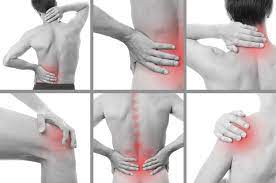Musculoskeletal injuries (think anything related to muscle, bone, tendon, or ligament) can be frustrating and debilitating, often prompting individuals to seek a diagnosis for their pain and discomfort. While a diagnosis is a crucial step in understanding the nature of the issue, it’s essential to recognize that it may not always provide the comprehensive answers one might hope for. The complexity of musculoskeletal injuries, particularly when the condition moves from acute to chronic, extends beyond a mere label, requiring a nuanced approach to treatment and management.
The Limitations of a Diagnosis:
- Variability in Presentation:
Musculoskeletal injuries can manifest differently from person to person, even if they share a common diagnosis. Factors such as individual anatomy, biomechanics, and lifestyle play a significant role in how injuries present, progress, and recover.
- Multifactorial Nature:
Musculoskeletal issues often result from a combination of factors, including overuse, previous injuries, muscle imbalances, and even psychological factors like stress. A diagnosis may identify the primary issue but might not encompass the full scope of contributing factors.
- Misdiagnosis or Coexisting Conditions:
Musculoskeletal conditions can be complex and may coexist with other health issues. Misdiagnoses or overlooking additional contributing factors can occur, leading to a less effective approach to treatment. Sometimes a diagnostic test can tell us about an injury, without the relevant timeline. In some circumstances, conditions picked up by imaging may have been present for some time, even preceding the onset of pain. It is therefore important to talk to your team about any diagnoses, new or old, alongside a comprehensive medical history and understanding of your previous and current lifestyle habits.
Why a Diagnosis Doesn’t Always Equal a Solution:
- Individualized Nature of Treatment:
Effective treatment for musculoskeletal injuries often requires a personalized approach. What works for one person may not be suitable for another. Factors like lifestyle, occupation, and overall health must be considered for a comprehensive management plan.
- Trial and Error in Treatment:
The management of musculoskeletal injuries sometimes involves a degree of trial and error. Different treatment modalities may need to be explored to find what works best for an individual, emphasizing the importance of open communication between patients and healthcare professionals. This will sometimes mean that the recommended recovery time from patient to patient may differ.
- Rehabilitation and Lifestyle Changes:
Recovery from musculoskeletal injuries often involves not only targeted treatment but also rehabilitation exercises and lifestyle modifications. These factors go beyond the scope of a diagnosis and require active participation from the individual in their recovery process.




